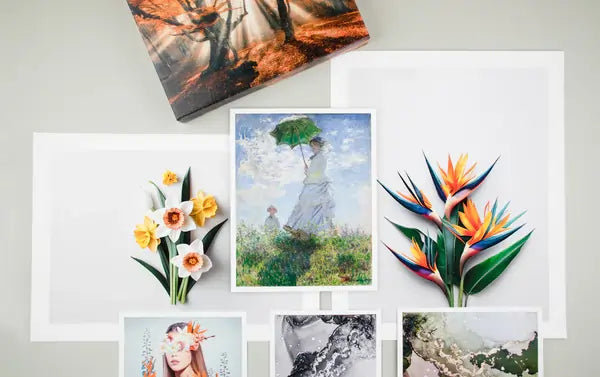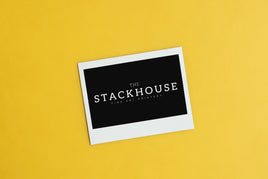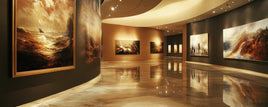TL;DR: Giclée printing combines precision inkjet technology with archival materials to produce fine art reproductions that last for generations. Learn about the key materials — printer, inks, paper, and digital files — that make this process the gold standard for artists and photographers.
What Makes Giclée Printing Special?
Giclée printing stands out for its ability to reproduce fine art and photography with stunning accuracy, depth, and longevity. Unlike standard prints, giclée reproductions use professional-grade printers, pigment-based inks, and archival media to ensure every detail of the original image is faithfully preserved. These materials work in harmony to create vibrant, museum-quality results that endure over time.
For an overview of how the process works, see our guide on everything you need to know about giclée printing.
1. Professional Inkjet Printer
The foundation of every giclée print is a high-quality inkjet printer — not a standard desktop model. Professional inkjet printers can hold up to 12 pigment-based ink cartridges, allowing for an exceptionally wide color gamut and tonal precision. They work by spraying thousands of microscopic ink droplets onto the surface, much like pixels on a digital screen, to create smooth gradients and realistic color transitions.
This precision printing method ensures consistent detail and archival quality across each print, producing results that meet gallery and museum standards.
2. Archival Paper and Canvas
Equally important to the process is the print medium itself. Giclée printing uses archival-grade paper or canvas, both designed for longevity and color stability. These materials are acid-free and lignin-free to prevent yellowing, fading, or degradation over time. Common types of giclée papers include:
- Matte Paper: Smooth, non-reflective surface ideal for soft, detailed artwork.
- Cotton Rag Paper: Textured surface that adds depth and tactile appeal to fine art reproductions.
- Canvas: A versatile option that mimics traditional paintings and offers durability for larger displays.
Many premium giclée papers contain minimal optical brightening agents (OBAs) to enhance brightness without compromising archival integrity.
To compare paper types, see our article on how to choose the best paper for photo prints.
3. Archival Pigment Ink
Unlike standard dye-based inks, archival pigment inks contain microscopic color particles suspended in a liquid base. These pigments bond with the fibers of the paper or canvas, creating vibrant, long-lasting prints that resist fading for up to 200 years under proper conditions. When combined with archival paper, pigment inks ensure the colors in your prints remain as rich and accurate as the day they were produced.
Archival inks also produce a wider color gamut, sharper detail, and smoother tonal transitions — essential for both photography and fine art reproductions.
4. High-Resolution Digital Files
Even the best printer and materials can’t compensate for a poor-quality image. To achieve the best results, giclée printing starts with high-resolution digital files — typically 300 DPI or higher. This ensures that every nuance, brushstroke, and color blend translates accurately to print. For reproducing original artwork, using professional scanning or photography is essential to preserve fine details and textures.
For step-by-step guidance, check out our guide on how to photograph your artwork for reproduction.
Why Materials Matter in Giclée Printing
Each material used in giclée printing plays a critical role in the final product. The combination of pigment inks, archival papers, and precision inkjet technology produces prints with unmatched clarity, vibrancy, and durability. This synergy allows artists and photographers to confidently reproduce their work without sacrificing quality or longevity.
Professional Giclée Printing at The Stackhouse Printery
At The Stackhouse Printery, we use state-of-the-art Epson SureColor printers, archival pigment inks, and museum-grade papers and canvases to produce exceptional fine art prints. Our process ensures color accuracy, texture depth, and true-to-original detail in every reproduction.
Ready to bring your art to life? Explore our Giclée Fine Art Prints or Gallery-Wrapped Canvas Prints, or visit our Order Page to get started.









